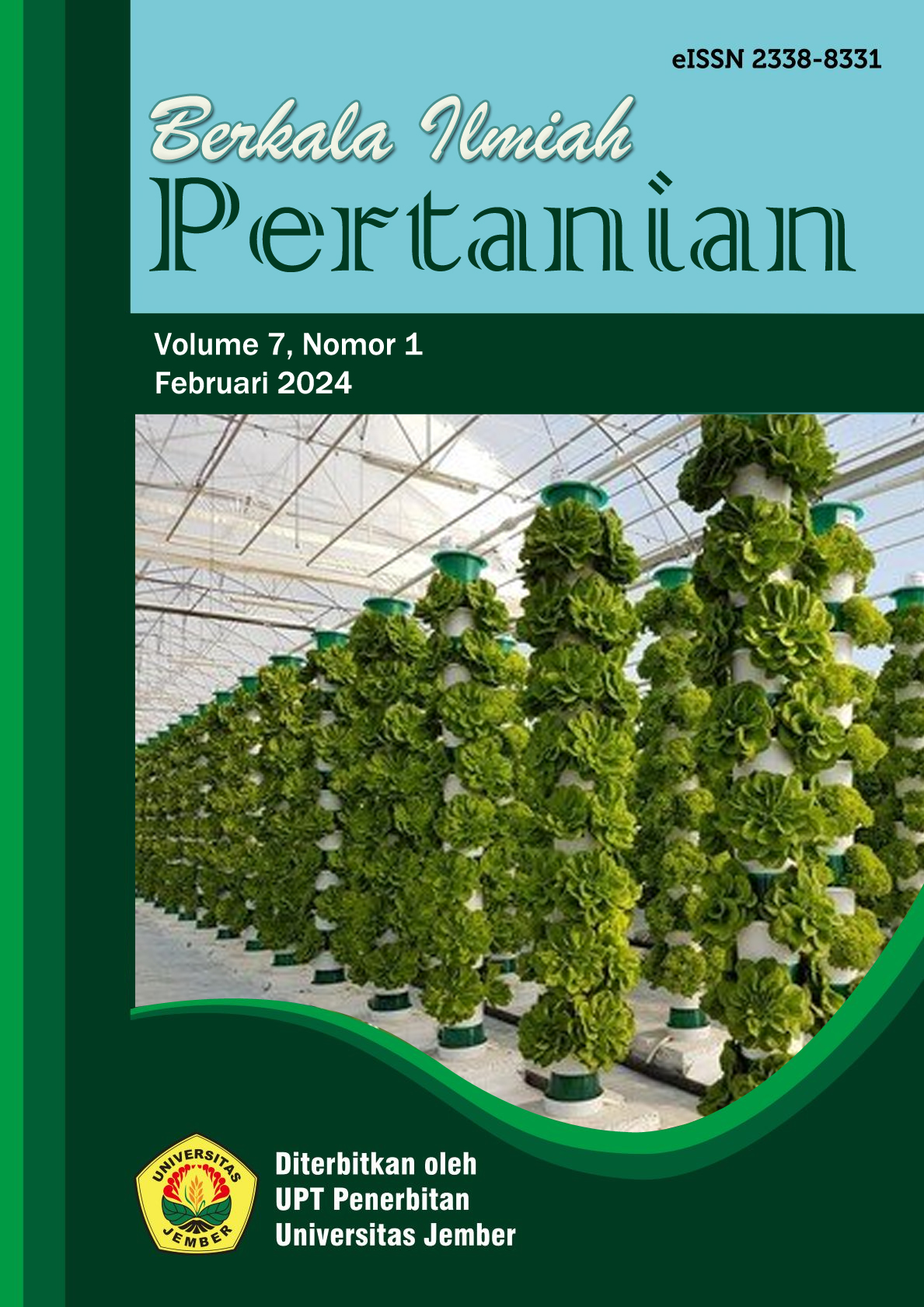Pengaruh Pupuk Hayati Jamur Mikoriza Dan Pupuk Rock Phosphate Terhadap Serapan P, Pertumbuhan serta Hasil Tanaman Cabai Rawit (Capsicum frutescens L.)
DOI:
https://doi.org/10.19184/bip.v7i1.42530Abstract
Application of mycorrhizal fungi biological fertilizers and rock phosphate fertilizers can increase plant P uptake, growth and yield of cayenne pepper (Capsicum frutescens L.). The purpose of this study was to determine the effect of the interaction between mycorrhizal fungi biofertilizer and rock phosphate fertilizer on P uptake, growth and yield of cayenne pepper. The experimental design used was a completely randomized design (CRD) factorial with 2 factors and 3 replications. The first factor was the application of 0 gr (M0), 10 g (M1) and 20 g (M2) mycorrhizal fungal biofertilizers and the second factor was the application of 0 kg rock phosphate fertilizer or the equivalent of 0 g (R0), 150 kg or 1 g (R1) and 300 kg or 2.6 g (M2). The variables observed were plant height, number of fruit planted, fruit fresh weight, plant fresh weight, root volume, root infection, plant dry weight, root shoot ratio and P uptake. The observed data were tested using analysis of variance (ANOVA) and tested further. using Duncan multiple range test (DMRT) at 95% confidence level. The results showed that there was no interaction between the application of mycorrhizal fungi biofertilizers and rock phosphate fertilizers. Application of mycorrhizal fungal biofertilizer (M1) can increase the degree of root infection by 72.22%, the number of fruit planted, fruit fresh weight, plant fresh weight, plant dry weight, root volume, root infection, P uptake and root shoot ratio. Application of rock phosphate fertilizer can also increase the number of fruit plants, plant fresh weight, plant dry weight, root volume and P uptake.
Downloads
Downloads
Published
Issue
Section
License
Authors who publish with this journal agree to the following terms:
1.Authors retain copyright and grant the journal right of first publication with the work simultaneously licensed under a Creative Commons Attribution-NonCommercial 4.0 International License that allows others to share the work with an acknowledgement of the work's authorship and initial publication in this journal.
2.Authors are able to enter into separate, additional contractual arrangements for the non-exclusive distribution of the journal's published version of the work (e.g., post it to an institutional repository or publish it in a book), with an acknowledgement of its initial publication in this journal.
3.Authors are permitted and encouraged to post their work online (e.g., in institutional repositories or on their website) prior to and during the submission process, as it can lead to productive exchanges, as well as earlier and greater citation of published work (See The Effect of Open Access).




















